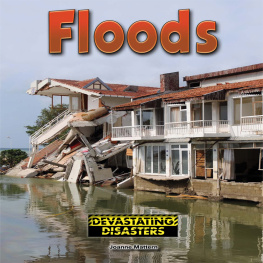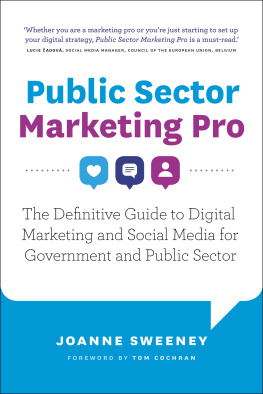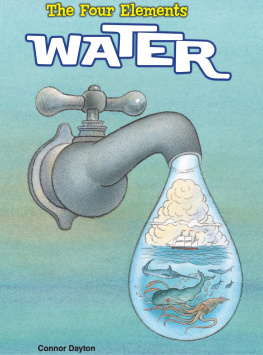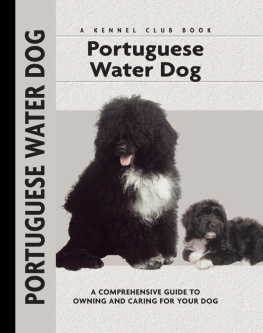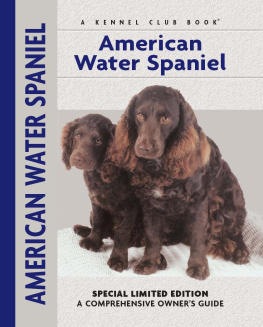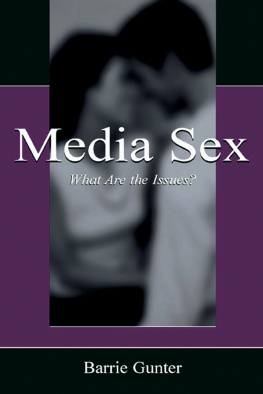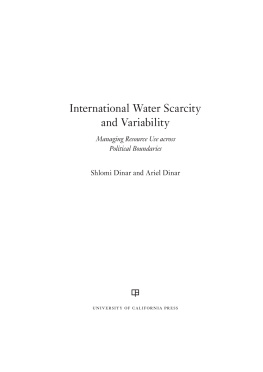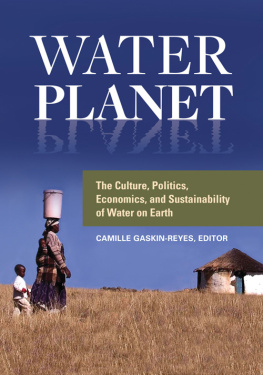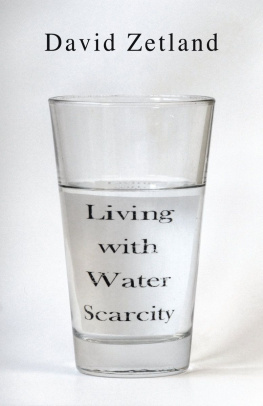I dedicate this book to my mother Joan Margaret Pearson.
This book is based on a wide range of interdisciplinary research funded by UK, European and Brazilian funding agencies: the Economic and Social Research Council (ESRC) and the Arts and Humanities Research Council (AHRC), as well as the Natural Environment Research Council (NERC), the Federal State of So Paulo (FAPESP) and the Belmont Forum. Some sections of chapter five are based on a blog posting I published entitled The Heart and Art of Drought: 10 Things I Have Learned from Brazil Drought Risk and You blog (www.dryproject.co.uk 28 September 2017) and some sections of chapters 2 and 6 are based on the research I undertook for two chapters I co-wrote: one for Social Memory Technology: Theory, Practice, Action (2016) by Worcman and Garde-Hansen and the other Towards a memo-techno-ecology: mediating memories of extreme flooding in resilient communities (2016) by Garde-Hansen, McEwen and Jones in Hajek, Lohmeier and Pentzolds Social Memory in a Mediated World: Remembering in Troubled Times. The author wishes to thank research participants, research collaborators and colleagues at the Universities of Gloucestershire, Warwick, West of England, in So Paulo and Belo Horizonte for their many research-led discussions. I wish to acknowledge the impact of Lindsey McEwen on my research, she has been a joy to collaborate and write with; and I value the contributions of my colleagues Owain Jones, Andrew Holmes and Franz Krause to the wider Sustainable Flood Memories and Drought Risk and You projects, both of which inspired deeper research of media archives, media representations and media practices for chapters 2, 5 and 6. The Belmont Forum (ESRC/FAPESP/DFG) Waterproofing Data project (led by Joo Porto de Albuquerque) and the Fapesp/Warwick Narratives of Water project with Danilo Rothberg were key to the transnational research with Brazil and Germany and provided the inspiration for chapters 3, 8 and 9. I wish to thank key people for their conversations and collaboration during the preparation of this book: Jacqui Cotton, Nerea Calvillo, Damian Crilly, Carlos Falci, Anna Reading, Gilson Schwartz, Karen Worcman, Mike Wilson, Emma Bee, Peter Kraftl, Carolin Klonner, Nicolas Salazar Sutil, Stefanie Trmper, the BBC archivist Mark Macey, staff at Gloucestershire Archives and the anonymous peer reviewer of the final manuscript.
Water is culture. Water is cultural. Culture is imagined as watery, fluid, droughty, flowing, immersive, trickling and increasingly stormy. It is difficult to separate what is commonly termed the natural world of rivers, seas, lakes and so-called acts of God of flood, drought and extreme wet weather from media representations, social mediation and commercial media production cultures of digitized communication.
However, shifts in geographic disciplines towards non-representational theory an approach that emphasizes flow, fluidity, mobility, emotion, affect and sensory experiences have dovetailed with many of the concerns of the arts and humanities (see Abram 1996; Thrift 2000; Cresswell 2012). In particular, the strong emotions and experiences (such as grief, loss, denial, nostalgia, love, refusal, loyalty, anger, violence, joy, awe, tragedy and opportunity) make loving the mess (Kenter et al. 2019) of water stories the starting point of any research project on media and water.
Such blurring of the boundaries between human and non-human, between bodies, languages, texts, experiences and environments has been, in fact, at the heart of media, cultural and communication studies for quite some time. Particularly in British academia wherein media studies draws upon a family tree of French critical and cultural theory, the Frankfurt School, the Glasgow Media Group, American mass communication studies, the legacy of Stuart Hall, postmodernism, feminism, postcolonialism, digital humanities, memory studies, and audience and fan studies to name the most salient influences. Yet rarely have water, water issues and water events been addressed in media studies research; perhaps in literature, philosophy and the creative arts of painting, writing and theatre but not in the broadcast, commercial and social media research domains where industry, infrastructure, policy, production and audience are so important. Thus, to return to the representational is to acknowledge that thinking about, measuring, managing, mitigating and adapting to watery issues are as much cultural work as they are political or scientific (involving stories, images, conversation, debate, community, creativity and feelings).
In this book, I cover diverse mediations of water by creative, commercial, publicly funded organizations, broadcasters, businesses and platforms who have been engaged in increasingly connected, connective and affective media performances, practices, texts, images and audience engagements. If the emerging creative industrial revolution of digital and media-tech is also to be a Green Revolution wherein climate issues move from story to action, then media and creative industries need to engage with water as more than corporate social responsibility. Moreover, the messaging of the water industry should see media and culture as more than a storytelling service. My research has been concerned with media and cultural practices that involve reactivating media archives of flood and drought, exploring the creation of new water content for marketing and communications, remembering and forgetting water cultures in heritage management, socially mediating water experiences in everyday life, and engaging communities in water data through visualization, experimentation and sociocultural mapping.
Therefore, this book presupposes a reader interested in water research who knows of the cultural turn in human geography (see Thrift 2000) but perhaps knows less of the various turns in the arts and humanities. Since the 1990s we have seen the significant impact of media, globalization, technology and creative practice on the affective entanglements of humans, non-humans and the natural world within cultural geography. Owain Jones argues in After Nature: Entangled Worlds that we can no longer police the arbitrary and inevitably leaky boundaries between natural and artificial and that the nature/culture dualism breaks down discussion into issues of scientific fact and risk, on the one hand, and political desirability or consumer choice on the other (2009: 295). Yet only recently has media studies (sitting across the arts, humanities, social sciences and technology studies) drawn the environment and the natural world into a deeper questioning of how much media and entertainment are enough; how much energy, resources and labour do media and creative technologies require; and how much media waste is tolerable to consumers who love the arts and culture.
Thus, while the cultural turn has been an ongoing focus, media researchers have been undergoing their own turns towards audiences, policies, technologies, spaces, industries and more recently the Anthropocene, media research has become interested in ecologies and topologies of production and industry. Always critically engaged with practices, places, consumers and experiences, exploring media cultures has meant appreciating media as massive, mundane, mobile, viral, affective as well as defined as flow, channels, peaks, waves, immersion and streaming (all watery atmospheric metaphors). While there has not been much of a watery turn in It is the intimate entanglement of media (past and present) with our watery environments that this book seeks to explore so that policymakers will increasingly expect to have arts and humanities researchers involved in discussions about managing water, making room for rivers, tolerating drought, adapting to flood, dealing with pollution and engaging the public in water issues.


